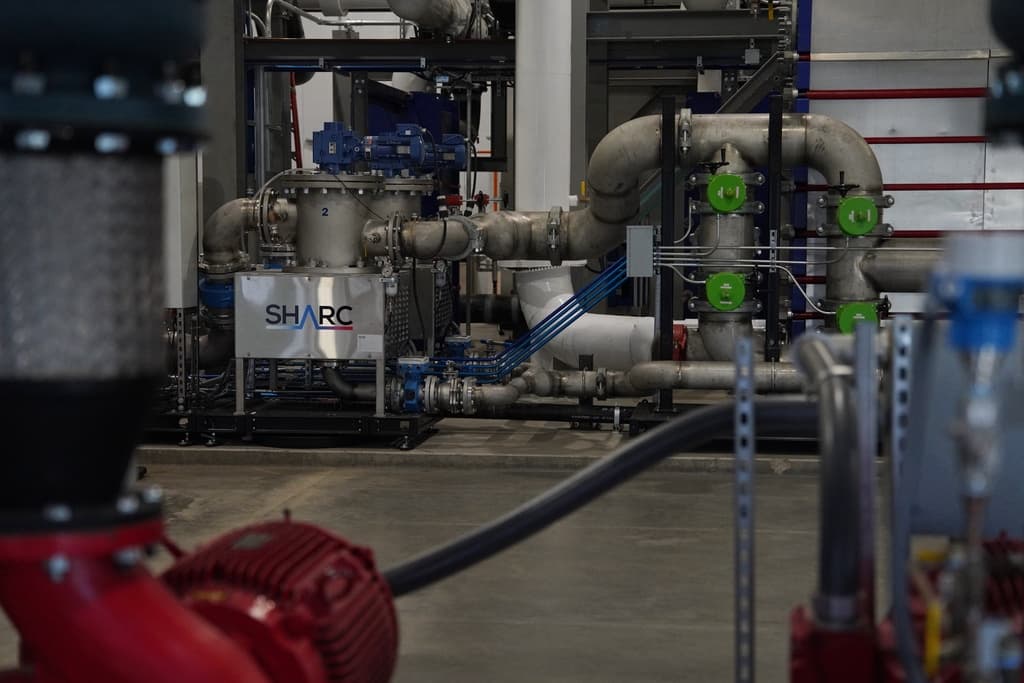
It’s late at night, and young Mabel is getting ready to head out on the town. She lives in an apartment in a typical American city in the 1920s. In her boudoir, Mabel puts on make-up and styles her hair while she’s surrounded by beautiful objects that typify the Art Deco style so well-known in that era.
An immersive exhibit puts you at the center of all that inside Denver’s Kirkland Museum of Fine and Decorative Art. And that backstory guides you through a period of the flapper girl and the economic prosperity before the Great Depression as a way to focus on rich artistic expression, including furniture and fashion.
Curatorial associate Becca Goodrum developed the exhibit, titled “Vanity and Vice: American Art Deco.” Open through May, it allows visitors to step into Mabel’s room and then follow her into a speakeasy – all furnished by Art Deco pieces from the Kirkland’s extensive collection, many of which haven’t been displayed in a main exhibit before.
“From the very beginning I knew I wanted the show to be about women,” Goodrum said.
“And the easiest way for me to do that was to make it about a woman so that you could kind of see yourself as this person. Or maybe you know this person, maybe she's your grandmother, your mother, your sister. I felt that was the easiest way to help you connect.”
Goodrum said the specific pieces from Kirkland’s collection shaped who Mabel is as a character, drawing from the Depression era glass, which was inexpensive yet unique, and also exquisitely crafted styles known as “elegant glass” that were very expensive to purchase during the Roaring 20s.
“[The collection] kind of made the decision for me that Mabel was going to be an upper-class woman, a white woman,” she said. “Because of the collection that we have and the lifestyle that I pictured her living, a woman of color would not have had those same opportunities.”
There was also a lot happening historically and culturally during the 1920s. White women had gained the right to vote, though “people of color would've had a longer fight ahead of them,” Goodrum added. Many women were also working, and it was the time of Prohibition.
“It's an exciting time for women, but it’s also complicated. There's just lots of things to dig into. Objects in the exhibition tell that story in a really interesting way.”
As people walk through the exhibit, none of the pieces are labeled as they would be in a typical museum show. And that’s by design. Instead, the museum experimented with an immersive audio guide – something it hadn’t done before. It’s an attempt to really make the exhibit come alive, especially when people follow Mabel into a speakeasy.
“Because you were following a woman through a night in her life, I didn’t want to take you out of that experience,” she said.

Because the pieces don’t have labels with text explaining what they are or where they come from, Goodrum created faux magazines and menus placed around the exhibit that have every item in the show included with plenty of details to supplement the audio guide.
In the speakeasy, glassware of all shapes and colors is on display along with other objects typically found in a bar at that time, like ashtrays. And stools allow visitors to sit right at the bar to see the pieces up close.
One of those barside pieces even puzzled some Kirkland staff when they saw it early on, leading Goodrum to pivot a bit.
It’s a tiny, thin-stemmed piece of glass that looks like it could hold a bit of Sherry or a digestif. But its shape is thin and rectangular, not round.
“They used to be cigarette holders, so either loose cigarettes or your whole box would fit in there,” Goodrum explained. ”Because it was a very sophisticated thing to do, smoke. So you had to look good doing it.”
When her colleagues didn’t know what the item was, Goodrum quickly added the visual cues of fake cigarettes and a Lucky Strike box.
Keeping the interactive theme and expanding its potential is something the Kirkland wants to keep exploring, Goodrum said.
“I think we overuse the word ‘immersive’ in museums, but we're all trying to do that. We're all trying to be like a Meow Wolf, but you can't really compete with a Meow Wolf in that way, in the way that this museum is set up,” Goodrum said.
“But we can still transport you to another place. And however we can do that, we want to. ”









